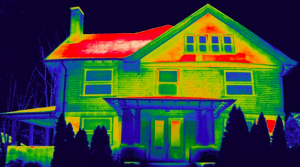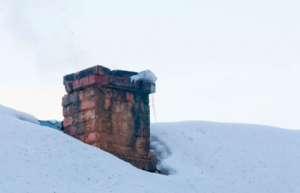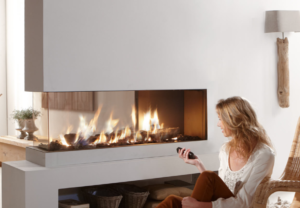Reduce Home Heat Loss

As the temperatures start warm, you probably aren’t worried about heat loss in your home but, do you remember the long winter that is finally ending? Do you remember the heating bills? Timmins is famous for its winters, which is why it’s no surprise that efficient home heating can be a major concern. But how do you make sure that you’re only paying what you should, not extra from heat loss? Finding out the causes of heat loss in your home is the best way to start stopping heat loss and save money in the long term. Plus, when spring arrives, these issues can be easily fixed.
Heat is Escaping from Your Chimney

Older homes may still have old-fashioned, wood burning fireplaces built in, with chimneys to expel the smoke. While fireplaces and chimneys make for a great winter experience, they are also a major source of heat loss.
You can reduce heating costs by sealing up a chimney if you no longer use your fireplace. However, if you do still enjoy building a fire from time to time, a “chimney balloon” acts as a seal to keep the heat in when not in use. Just deflate it when you’re ready to light things up again.
Pay Attention to Your Windows

Draw your curtains or blinds to reduce heat loss in the winter
A window is essentially a hole in your home with a transparent cover so you can see through it. It can admit light, which also carries heat, but can even radiate that same heat out. A window is always a “point of vulnerability” in a home for heat loss and gain. In the winter, you should use heat gain to your advantage while mitigating heat loss. Any windows with a southern exposure should have curtains or drapes open up to allow sunlight to stream in, for “free heating” during the day.
At night, however, you should use those same curtains or blinds to seal in the heat and slow down heat loss. If you really committed to reducing heating costs, invest in new, energy-efficient windows with innovations like an insulating layer of argon gas between the panes.
Your Insulation Might Need an Upgrade
One of the most common reasons for heat loss is poor insulation in a home. If your roof and walls are not properly insulated, cold air is constantly seeping in. Modern insulation like cellulose, fibreglass, and polystyrene make a huge difference in retaining heat inside your home. If reducing heating costs is one of your goals, evaluate your insulation situation, and upgrade to modern materials and techniques.
Your Floors Are Also Vulnerabilities
Yes, you can even experience heat loss through your floor! Wooden floorboards, for example, having gaps and seams through which cold air can leak in. You can insulate your floor with large area rugs to block those leaks.
You might even consider in-floor heating as an alternative. Floor heating systems not only mean you’ll have a toasty warm floor in the winter, but it’s a less invasive way to heat, avoiding the stuffy air of turning up the furnace. It’s a unique, foot-friendly way to reduce heating costs and get rid of those socks and slippers while at home during the winter.
Stopping heat loss in your home starts with noticing the causes and can end with some of these practical solutions!
Contact Us for a Free Heat Loss Assessment, we’re sure it’ll reduce your heating bills next winter.

